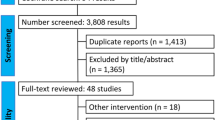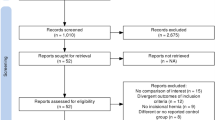Abstract
To circumvent the degenerative nature of inguinal hernias and adverse effect of suture line tension, the Lichtenstein tension-free hernioplasty began in 1984 and evolved (between 1984 and 1988) to a procedure that is now considered the gold standard of hernia repair by the American College of Surgeons. The objective of this paper is to outline the reasons behind the minor changes made during the short, 4-year evolution of the technique, describe the key principles of the operation, and introduce a new mesh that, if elected to be used, automatically satisfies all the key principles of the procedure and guides the surgeon to perform the operation correctly. The worldwide reported result of the operation by experts and nonexperts alike is a recurrence and complication rate of less than 1%. When the key principles of the procedure, which, as reported by many authors, are easy to learn, perform, and teach, are respected, the operation results in an effectiveness (external validation) that is virtually the same as its efficacy (results of the experts), attesting to the simplicity of the procedure.






Similar content being viewed by others
References
Read RC (1992) A review: the role of protease-antiprotease imbalance in the pathogenesis of herniation and abdominal aortic aneurism in certain smokers. Postgrad Gen Surg 4:161-5
Rosch R, Klinge U, Si Z, Junge K, Klosterhalfen B, Schumpelick V (2002) A role for the collagen I/III and MMP-1/-13 genes in primary inguinal hernia? BMC Med Genet 3:2
Wantz, GE (1996) Experience with tension-free hernioplasty for primary inguinal hernias in men. J Am Coll Surg 193:351–360
Nyhus LM (1989) The preperitoneal approach and iliopubic tract repair of inguinal hernia. In: Nyhus LM, Condon RE (eds), Hernia, Third Edition, J.B. Lippincott Company, Philadelphia, Pennsylvania, pp154–177
Lichtenstein IL (1987) Herniorrhaphy. A personal experience with 6,321 cases. Am J Surg 153:553–559
Amid PK, Shulman AG, Lichtenstein IL (1993) Critical scrutiny of the open tension-free hernioplasty. Am J Surg 165:369–71
Amid PK, Shulman AG (1993) Tension-free repair of inguinal and aponeurotic hernias. G Chir 14:145–154
Drye JC (1948) Intraperitoneal pressure in the human. Surg Gynecol Obstet 87:472–475
Amid PK (1997) Classification of biomaterials and their related complications in abdominal wall hernia surgery. Hernia 1:12–19
Klinge U, Klosterehalfen B, Muller M, et al. (1998) Shrinking of polypropylene mesh in vivo: An experimental study in dogs. Eur J Surg 164:965
Amid PK, Shulman AG, Lichtenstein IL, Sostrin S, Young J, Hakakha M (1994) Experimental evaluation of a new composite mesh with the selective property of incorporation to the abdominal wall without adhering to the intestines. J Biomed Mater Res 28:373–75
Amid PK, Shulman AG, Lichtenstein IL (1994) Local anesthesia for inguinal hernia repair step-by-step procedure. Ann Surg 220:735–737
Amid PK (2000) Driving after repair of groin hernia. BMJ 321:1033-1034
Katz EE, Patel RV, Sokoloff MH, Vargish T, Brendler CB (2002) Bilateral laparoscopic inguinal hernia repair can complicate subsequent radical retropubic prostatectomy. J Urol 167:637–638
Stoppa R, Diarra B, Verhaeghe P, Henry X (1998) Some problems encountered at re-operation following repair of groin hernias with pre-peritoneal prostheses. Hernia 2:35–38
Borchers H, Brehmer B, van Poppel H, Jakse G (2001) Radical prostatectomy in patients with previous groin hernia repair using synthetic nonabsorbable mesh. Urol Int 67:213–5
Liberman MA, Rosenthal RJ, Phillips EH (2002) Laparoscopic ventral and incisional hernia repair: A simplified method of mesh placement. J Am Coll Surg 194:93–95
Losanof JE, Richman BW, Jones JW (2002) Laparoscopic repair of incisional hernia. Which prosthesis to choose? Surg Endosc 16:1500–1501
Ferrando JM, Vidal J, Armengol M, Gil J, Manero JM et al. (2002) Experimental evaluation of a new layered prosthesis exhibiting a low tensile modulus of elasticity: Long-term integration response within the rat abdominal wall. World J Surg 26:409–415
Gillian GK, Geis WP, Grover G (2002) Laparoscopic incisional and ventral hernia repair (LIVH): an evolving outpatient technique. JSLS 6:315–22
Amid PK (2002) A 1-stage surgical treatment for postherniorrhaphy neuropathic pain. Triple neurectomy and proximal end implantation without mobilization of the cord. Arch Surg 137:100–104
Fitzgibbons R (2000) Management of an inguinal hernia: Conventional? Tension-free? Laparoscopic? or maybe no treatment at all. General Sessions of the American College of Surgeons. 86th Annual Clinical Congress
Shulman AG, Amid PK, Lichtenstein IL (1995) A survey of non-expert surgeons using the open tension-free mesh repair for primary inguinal hernias. Int Surg 80:35–36
Kingsnorth AN, Bowley DMG, Porter C (2003) A prospective study of 1000 hernias: results of the Plymouth Hernia Service. Ann R Coll Surg Engl 85:18–22
Author information
Authors and Affiliations
Corresponding author
Rights and permissions
About this article
Cite this article
Amid, P.K. Lichtenstein tension-free hernioplasty: Its inception, evolution, and principles. Hernia 8, 1–7 (2004). https://doi.org/10.1007/s10029-003-0160-y
Received:
Accepted:
Published:
Issue Date:
DOI: https://doi.org/10.1007/s10029-003-0160-y




